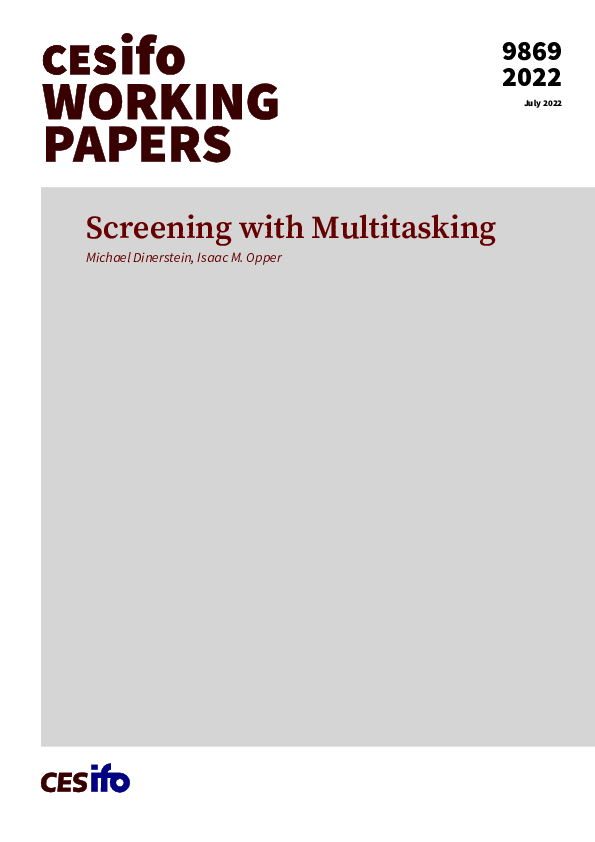Screening with Multitasking
CESifo, Munich, 2022
CESifo Working Paper No. 9869

What happens when employers would like to screen their employees but only observe a subset of output? We specify a model in which heterogeneous employees respond by producing more of the observed output at the expense of the unobserved output. Though this substitution distorts output in the short-term, we derive three sufficient conditions under which the heterogenous response improves screening efficiency: 1) all employees place similar value on staying in their current role; 2) the employees’ utility functions satisfy a variation of the traditional single-crossing condition; 3) employer and worker preferences over output are similar. We then assess these predictions empirically by studying a change to teacher tenure policy in New York City, which increased the role that a single measure — test score value-added — played in tenure decisions. We show that in response to the policy teachers increased test score value-added and decreased output that did not enter the tenure decision. The increase in test score value-added was largest for the teachers with more ability to improve students' untargeted outcomes, increasing their likelihood of getting tenure. We find that the endogenous response to the policy announcement reduced the screening efficiency gap — defined as the reduction of screening efficiency stemming from the partial observability of output — by 28%, effectively shifting some of the cost of partial observability from the post-tenure period to the pre-tenure period.
Labour Markets
Economics of Education